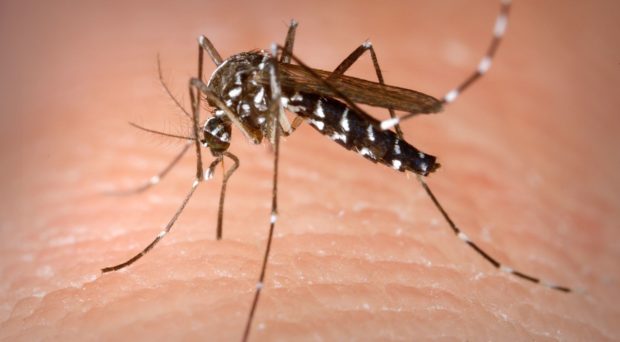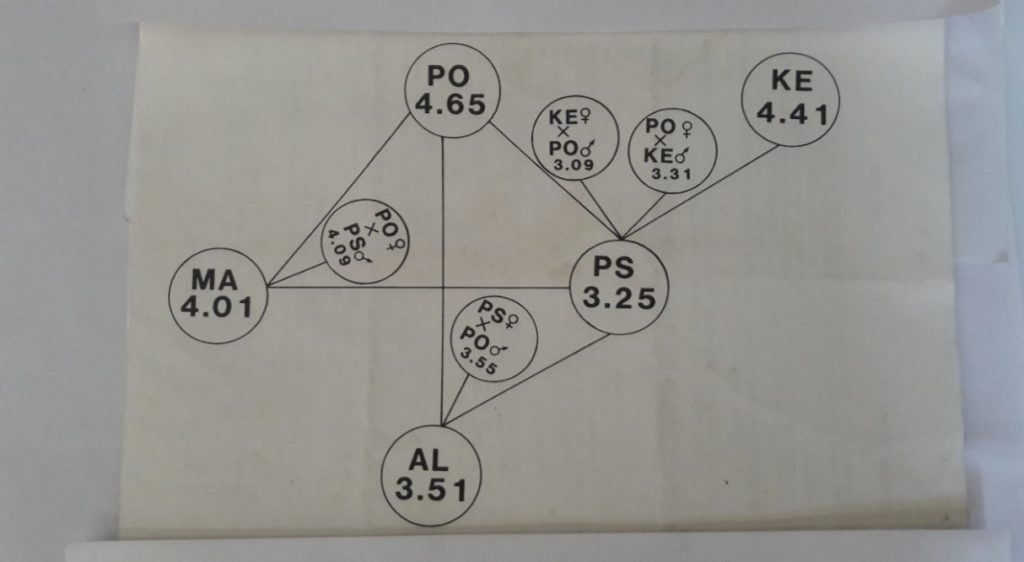
Aedes (Stegomyia) albopictus, the Asian tiger mosquito (vector of dengue, chikungunya and Zika virus); the most invasive species presently spread across continents. By James Gathany. Centers for Disease Control and Prevention's Public Health Image Library (PHIL), Public Domain.
The mosquito: king of genetics
While the Drosophila fruit fly is known to be ‘queen of genetics’, the notorious mosquito is no less than ‘the king of genetics’ for having the similar attributes of a short life cycle and high reproductive potential, thus helping us to understand/demonstrate laws of inheritance. Many mosquito species can easily be brought into laboratory culture and cross-bred, permitting an understanding of speciation mechanisms in closely related species groups.
Sibling-species complexes and control strategies
Many mosquito species of all three major genera; Anopheles, Culex and Aedes are proven vectors of communicable diseases (malaria, filariasis and arboviruses) and have been characterized to be sibling-species complexes/groups. This has implications for formulating control strategies. Many such species have been the subject for in-depth investigations for varied bionomical characteristics (bionomics related to vector ecology, viz., information on mosquito breeding habitats, host choices for blood feeding, peak biting activity hours etc.) and disease transmission relationships.
The Aedes (Stegomyia) scutellaris group: an ideal species group
Amidst several species’ groups, the Aedes scutellaris group (vectors of filariasis), comprising more than 30 closely related species, have an insular distribution in the South Pacific (a natural field laboratory) and provide clinching evidence in support of ‘hybrid speciation’. Most species of this group (distinguished by subtle morphological differences) can easily be inter-crossed with little or no pre-mating barriers and exhibit varying degree of post-zygotic fertility, permitting genetic analyses of species and hybrids.
Chiasmata frequency: a cytotaxonomic tool
Cytological analyses of species and hybrids of the Ae. scutellaris group revealed that, while virtually all mosquito species have three pairs of chromosomes (2n=6), chiasmata frequencies (a measure of genetic homologies) varied between species, but mean chiasmata frequency was species-specific and differed significantly from all other species.
Hybrid origin of a species: some supporting evidence
Hybrid origin, initially hypothesized based on classical taxonomy of species of the Ae. scutellaris group, was further substantiated by mean chiasmata frequency of species and inter-specific hybrids. It was observed that while chiasmata frequency was species specific, that of inter-specific hybrids was not significantly different from a third designated species having intermediate values. Based on these criteria, the hybrid origin of some species could be derived, having a distinct morphology and distribution pattern.
For example, the origin of Ae. pseudoscutellaris (endemic in Fiji Islands) could be derived from hybridization between Ae. kesseli x Ae. polynesiensis, having intermediate mean chiasmata frequency between two parental species that were significantly different from either parent species, but not from those of reciprocal hybrids.

Similarly, the origin of Ae. malayensis could be attributed to hybridization between Ae. polynesiensis females x Ae. pseudoscutellaris males; and that of Ae. alcasidi by Ae. pseudoscutellaris females x Ae. polynesiensis males. The common ancestry of both these species was further corroborated by near absolute morphological similarities as well as electrophoretic analyses but underscores the importance of cytoplasmic differentiation in the speciation process, there being unidirectional compatibility between these two species.
What is common in these species is Ae. polynesiensis (the most widespread in the Polynesian islands), which supposedly served as an ancestral species to all by the process of hybridization aided by human migration westwards, i.e., East to West migration.
In conclusion
A measure of chiasmata frequencies provided empirical evidence in support of ‘hybrid origin’ of these mosquito species. Armed with molecular tools we find that evidence is equally accumulating in other animal species as well as in the plant kingdom. Apparently, speciation by hybridization across genera in mosquitoes is more common than once believed.
However, hybridization (although not exclusive) has been a potent factor and forerunner in speciation in the mosquito world; associated as it is with heterotic advantage (hybrid vigour) marked by enhanced fitness in the newer ecological niche. Nevertheless, in the process of the origin of new species, restricted geneflow by geographic isolation (allopatric speciation), chromosomal divergence (fixation of inversions/deletions/duplications) and cytoplasmic differentiation (non-reciprocal fertility); all played pivotal role.

Comments